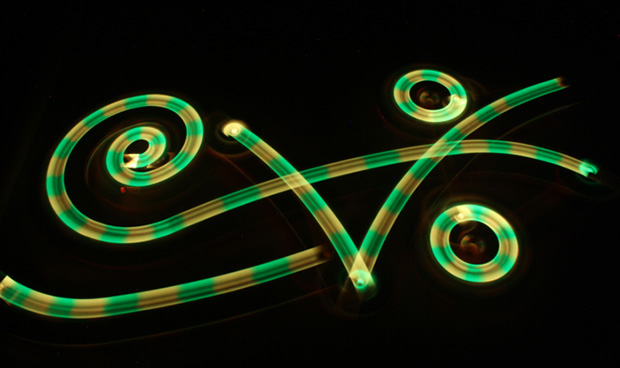I don't know exactly who was the first person to figure out that robots could be used for long-exposure light painting (although it may have been the guy linked to from here), but it's something that I've dabbled in for science, as have many others. It's a great way of making art, too, and it's relatively easy to do with a minimal amount of hardware and programming knowledge. Thymio II shows us how.

Thymio robots are equipped with an array of programmable LEDs, and it's very easy to get them to do simple behaviors, like driving around in trajectories that combine lines and curves. Mariane Brodier created all of the images shown here by pre-programming motions, cycling the LEDs through color changes, and then letting the robot go nuts in a dark room while pointing a camera at it with the shutter open for a minute or two. Here's some of what she came up with, along with her descriptions:
The following image has been programmed only with colours, therefore without movements; in order to make this picture, the robot oscillated at the end of a wire that unrolls itself.

For this sequence, I was inspired by the Tangram, a Chinese puzzle that comes from splitting a square into 7 basic parts: five triangles, a square and a parallelogram. The robot being able to make only lines or curves, I could program the outline of several puzzles.

For this sequence, I based my work on the "crop circles" that are often attributed to aliens.

This sequence looks much like the first, except that instead of using all colors, only two colors are alternated making dotted lines. This sequence is the last I made, therefore the trajectories are much more complex that in the first sequence.





